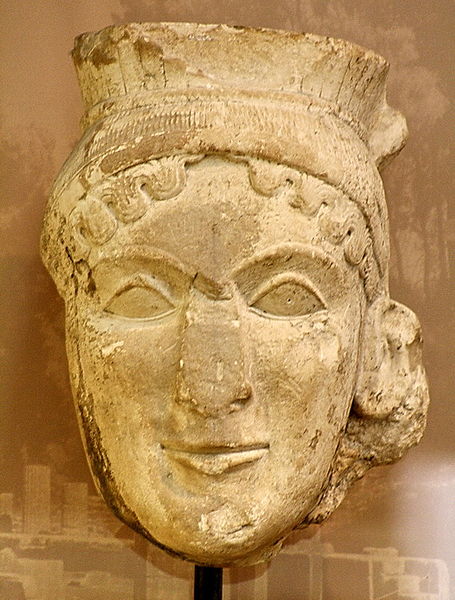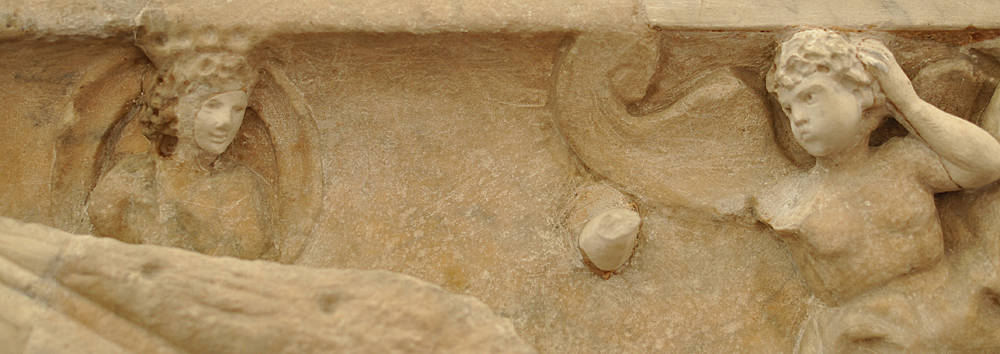
The Jonah Sarcophagus: Detail, Juno and Aeolus


In the Book of Jonah it is God who raises the great storm that leads the sailors to eject the unwilling prophet. But on this sarcophagus the storm is the work of these small figures seen below the upper rim of the sarcophagus and just above the sail. The diadem identifies the one on the left as the goddess Juno, and the other one's wings and puffed cheeks are characteristic of Aeolus, the wind god. In the first book of the Aeneid Juno gets Aeolus to buffet Aeneas's ship with a great storm in hopes of preventing the destiny that she fears: that Aeneas will find a home in Italy and build a civilization there to rival her favored Carthage.
This striking substitution of pagan gods for the Lord as instigators of the storm leads the viewer to consider how Jonah might resemble Aeneas. If we think of Jonah's experience as a type of baptism, the malign gods of the Aeneid may here represent the forces that conspire to keep him from his true patria, which is Heaven.
View this image in full resolution.
View the entire sarcophagus.
Photographed at the Museo Pio Cristiano by Richard Stracke, shared under Attribution-NonCommercial-ShareAlike license.